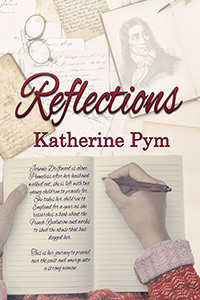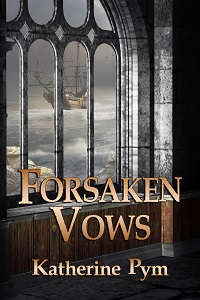Turning
Ideas into Fiction
I know well-meaning friends often say “You ought to write
this down, it would make a great story.
Well, actually, no it wouldn’t. I’m sure you’ve all heard the saying
“fact is stranger than fiction”, well it is. If you’re writing nonfiction, fine
go ahead and use the story about Uncle Joe getting stuck on the roof. It was a comical incident and would make a
great creative nonfiction story. However, for fiction the idea won’t make for a
great story without some changes. For
the most part, it’ll come off as false. Readers just won’t believe it. Besides
you, the author would be telling the story.
We want to show our stories.
Here’s our incident. Uncle Joe got stuck on the roof
while hanging Christmas lights. He had
put a ladder on the peak of the garage and when he went to get off the other
peak, he reached his foot out, the ladder slipped away. He moved toward and inched his way off the
roof, reached his foot out and hoped to snag the ladder. Again, it slipped
away. One more time and it slipped out of reach. By this time, he was hanging
by his elbows. No one was in the house. It was cold and the roof was covered
with snow. He looked around to see if a neighbor might have come out. Nothing –
his arms were getting tired and he didn’t know what to do. The only thing left was to jump. He knew if he landed on his feet, they’ slip
out from under him and he’d slide off the roof like a bullet. He took a deep breath and let go. Thankfully
he landed and didn’t slide.
If I were writing it for creative nonfiction, I’d
embellish it, make it humorous. It
almost sounds like an incident from National Lampoons’s Christmas
Vacation.
But, how do we create a story from this idea? Some people need to plot out the idea on
paper, which is fine. I wish I could do that.
But, I’m one of those writers that just start writing. Oh, I’ll jot down some ideas and know where I
want to go, but in the beginning, I usually have no idea how to get there. And that works for me. Whatever works for you is fine.
So, we have the idea.
A man is stuck on a roof. We
don’t have to have him putting up Christmas lights. He could be up there for a
variety of reasons.
One of the first things, even for me, is to create the
plot. I start, of course, with my
character's name, age and appearance. Okay let’s call our guy, Charlie. He’s
middle-aged, slightly balding, but tall and muscular. We’ll talk more about
characters in later lessons.
Next, I ask why Charlie was on the roof.
Once I have my characters, I develop my idea. First question: What genre’ am I writing? If I’m writing mystery I have to decide, is
it a murder mystery? Who gets killed,
where and why? This is where we start
asking the questions, what happened, how did it happen, etc.
Hmm - maybe someone moved the ladder. And maybe Charlie
makes it down but he knows someone is trying to kill him.
If Charlie is the
intended victim we’ll need to a potential killer.
Once we know the where and why, we need to know if the
murder is going to happen in the book, or behind the scenes. In other words, has the murder been committed
when we come on the scene or are we going to show our readers the murder? In this case it’s an attempted murder because
Charlie isn’t dead.
Then we need to know how our main character is going to
solve the crime. We need some clues,
usually not ones the reader will pick up on right away, but clues that at the
end of the story they’ll hit their foreheads and say “Oh I should have known.”
Do you see how we took a real-life incident and changed
it into something totally different? Sure, we could have written humor and
wrote something like National Lampoon, but why stop there. Explore different avenues. You could take the
same incident and change it into a romance or fantasy. Maybe even Science Fiction. I don’t write either so I’m not going try to
explain that. But who knows maybe while Charlie is repairing the roof, men from
mars kidnap him? Let your imagination
run wild.
Everything around us has potential for story ideas. We
only have to look at the world around us with a writer’s eye.
What do I mean by everything? Here’s a good example – Let’s say you’re
stuck in traffic. What do you usually do? Turn up the radio, call someone from
your cell phone, and tap the steering wheel impatiently? Next time turn that
negative energy into something positive. Who is in the car next to you, behind
you? Is that carload of kids off to a soccer game, Grandma’s house? Look at the
driver, what is she feeling, sitting there with a car full of kids bouncing and
jumping around. Her mouth is moving. Is she yelling, singing, playing a game
with them? Where are they going? It’s a potential story idea.
How about that young couple next to you, are they in
love, arguing? Put them in a scene - make up a story. That isn’t just a car
full of kids, or a young couple. Don’t’ think of it as being stuck in traffic.
The same thing applies to standing in line at a supermarket. We are viewing
potential characters, ideas, scenes, making up plots. Look in their carts. Are
they buying that wine and cheese for a rendezvous or a celebration? A cart full of groceries, three, maybe four
gallons of milk, family sized packages of meat, looks like a big family – maybe
they take in foster kids. Every place
you go you should see potential settings for stories. Everyone you see becomes
a potential a character.
But let’s go a little further -Check out the daily
newspaper. Many articles give us ideas for our next plot. Maybe the bank robber
will make a good character for our villain. Don’t just read the headlines, read
the small stories. Read the local pages.
But let’s not stop there, look in the classifieds? Under
help wanted ads, there are many different and unusual occupations for our
characters. And don’t skip the business opportunities and legal notices. I found an interesting Notice regarding a
Public Hearing on the merits of designating several old schools in the area as
city landmarks. This piqued my interest since I had attended two of these
schools. This could lead to a possible setting for a story or maybe a
nonfiction article about a trip down memory lane. Maybe one of these schools is slated to be
torn down. It’s been vacant for a long time. The crew goes into the abandoned
building and finds a body or an old suitcase full of money. See the potential.
Then of course there’s equipment. You can learn a lot about a community,
especially a small community by what kind of equipment is for sale. Farming community – farm tractors.
Don’t forget to read the for-sale ads. Every conceivable
item is for sale from antiques to stereo equipment. I particularly enjoy
looking through the jewelry section. One
ad for a diamond engagement ring valued at three thousand dollars was listed as
a must sell for twelve hundred. The ad raised my curiosity. I figured it was for sale because of a broken
engagement. But what if the woman’s husband died leaving her penniless and she
desperately needed money for medical bills. More interesting to me was the
thought of who would purchase the ring.
I wondered what man would buy a second-hand ring, albeit a good deal,
for his new fiancée. Then I thought maybe he took it to a jeweler and had it
put into a new setting. What would happen, I wondered, if the fiancée found out
she had a used diamond. Would she think what an ingenious idea or would she be
angry? All this from a one-line ad. The newspaper is an excellent source for
ideas.
Magazines are another good source for ideas. Open it to
any page, look at the pictures, even the advertisements - we see an attractive
woman or a couple. Imagine them in a scene. Create a plot around them. I picked up a magazine the other day and it
had an ad for a real estate company. It
showed a house with a for sale sign in front of it. It was a beautiful house with a well-kept
lawn and fabulous landscaping. Why, I
wondered is that house for sale? Who are
the people selling it? Are their children grown and they no longer need a house
this size? Or are they getting a divorce, was there a death in the family? My
imagination started to run away with all sorts of ideas about the owners and
why they were selling. There are many ways to create stories from simple
pictures.
But right in your own home you can get ideas. Look
around, what do you see? Right now, I
see a room with a computer, printer, and a scanner. However, it’s not just a
room. It’s a potential setting for a story. Now lean back and really look at
the room. My walls are pewter blue - a cream-colored shade covers the window.
If I were writing a story, I would elaborate on this through my character.
Want to turn it into a mystery – try this: Our character,
let’s call her Evelyn (I have no idea where I came up with that name it just
happened, but more about that later.) Evelyn goes to work; she enters her
office only to find someone ransacked it. Now through Evelyn we’re going to
show the office.
Evelyn yawned as
she put the key in the lock. Going to
have to quit these late nights, fun as they were her body just couldn’t take it
anymore. She pushed the door open and
froze. Her computer lay on the floor and the printer was upside down on the
counter. Papers lay scattered over the floor and a purple liquid dripped down
the pewter blue walls. Evelyn stifled a
scream. The cream-colored shades looked like they were splattered with
blood. (Hmm - I may have the beginning
of a new story here).
And don’t forget our chat room friends or writing
buddies. Many times, I got an idea for an article, just from our daily
conversation. Today the subject of being
the only one who managed to fill the ice cube trays came up. One thing led to another and it turned into
an idea for a humorous article. During
the course of the conversation, we took it a little further. Nothing is more
annoying than finding no toilet paper on the roll, which changed the whole tone
of the article from empty ice cube trays to why am I always the one who has to
do everything? Why can’t someone else in the house take the time to do a simple
task like add water to the ice cube tray before putting it back in the freezer?
And why can’t they at least rinse the dish they set in the sink, although why
they can’t put it in the dishwasher is beyond me. Anyway, you get the gist of
it. A simple thing like an everyday
complaint turned into a very humorous article.
Now let’s change it to fiction. Your character bought a
bag of ice. When she opened it she found something – maybe a piece of jewelry?
How did it get there? We now have the potential for a good mystery. Did the woman’s husband put it there? Was it
planted by someone? Where did it come from? Was it stolen?
While creating ideas these are some of the questions to
ask. Who, Where, What and Why? Sources for ideas are limitless. We just need to
view the world around us with the writer’s eye.






















